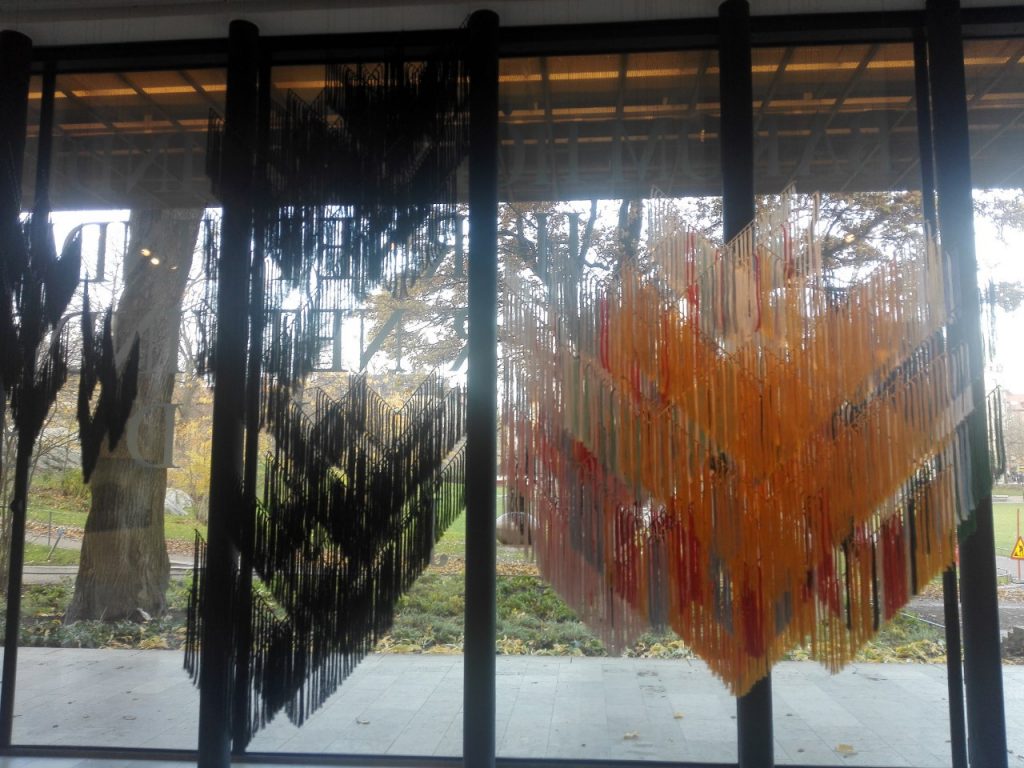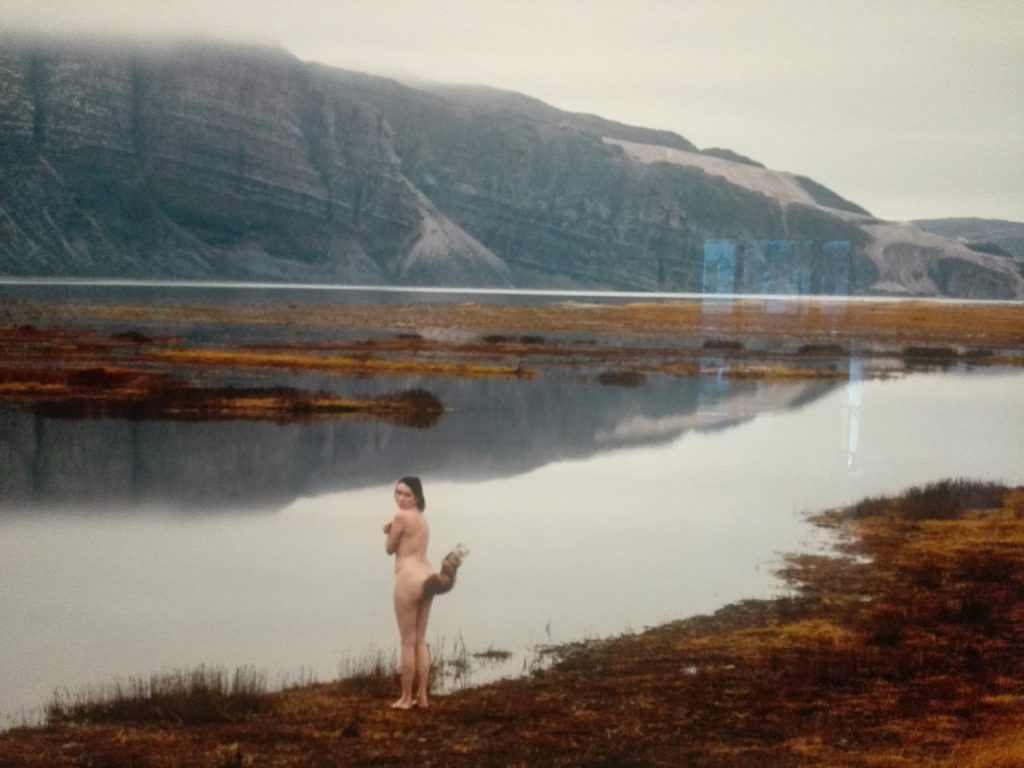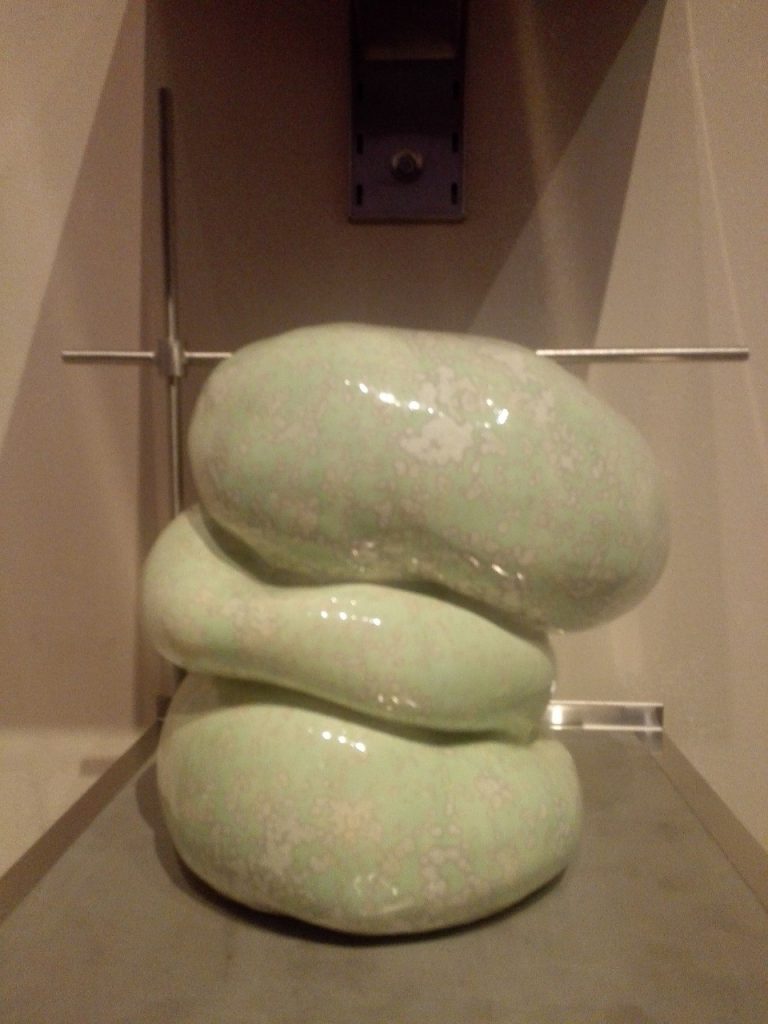
There’s an interesting exhibition about Sámi contemporary art in Stockholm this winter.It’s entitled Behind the corner, the wind’s yoik.We discover what that means at Sven-Harry’s art museum.

Luckily a few private museums have been kept opened for us art-loving people this otherwise mostly locked down, gloomy winter season. Sven-Harry’s, situated in a park in central Stockholm, provides us with an unusual and utterly interesting peak into Sami culture and art world.
Their geographical area is called Sápmi and includes Northern Sweden, Norway, Finland and Russia. These indigenous peoples have been discredited for centuries but are finally being recognized and accepted. However it’s rare to see their contemporary art displayed like this, representing 15 artists.
The title of the exhibition, Behind the corner, a wind’s yoik, is a poem of Inghilda Tapio. It’s a fitting title, indeed it’s like a wind, a wind blowing in all directions, impossible to seize and difficult to describe. Like the wind, it has to be lived, to be felt. However, I will try to give you a few glimpses of my impression of this complex, beautiful and harsh reality, as it is exposed in these art works.

There are intimidating installations, paintings, ceramics and humoristic embroideries and photographs. It’s impossible to give them all the credit that they need. I will site a few however: such as a colourful installation, representing Sámi women standing together in their traditional robes. It is
contrasted with black fringes hung next to it, representing crows that are part of their mythology and belief in animism.
Equally stunning is the reindeer necklace or crown, fittingly called Keep hitting our jaws, hung up on a string from the ceiling. Máret Ánne Sara is both a journalist and an artist. She denounces, with this piece, the problems encountered by the reindeer keepers, such as climate change and forced slaughter of their herds. Sámi shamanism includes belief that spirits inhabit animals, plants and rocks, each one playing a certain role in society. Thus when the animals or nature is attacked, it’s also an assault on their religion.
In a more humoristic tone are Britta Marakatt-Labba’s embroidered pieces. They resemble funny drawings or comic strips. She’s one of the better-known artists and I’ve seen her works in other museums. There are also sculptures, representing fishing, woodcutting and enormous empty landscapes. On the darker side, are for example the ceramics on the upper floor, representing the times when sculls were measured to assess the “intelligence” or rather lack thereof of the indigenous peoples in Scandinavia. Finally there is a film in the basement worth viewing and a flag-sculpture on the rooftop that won’t let you indifferent.

The exhibition is certainly interesting and unusual. However as often is the case with contemporary art, it’s definitely worth to view it with a guided tour and possibly to read a bit beforehand of Sápmi and Sami culture in general, to fully grasp the works.
I did miss some yoik though. It would have been nice to hear it in the background at least. There are several very good contemporary Sámi musicians that could have added a musical touch to the exhibition that is sometimes quite destabilising, as it rightly should be.
Truth is seldom like a fairy-tale and the truth of how we have treated the indigenous peoples of the North is definitely not a rosy one! It needs to be exposed and rectified. It’s only then that justice and righteousness can be attained. This is a steppingstone in the right direction. I’m looking forward to more of its kind in the future.
Anne Edelstam,Stockholm
Sven-Harrys museum, Behind the corner, the wind’s yoik, 9 October 2020 – 4 April 2021
